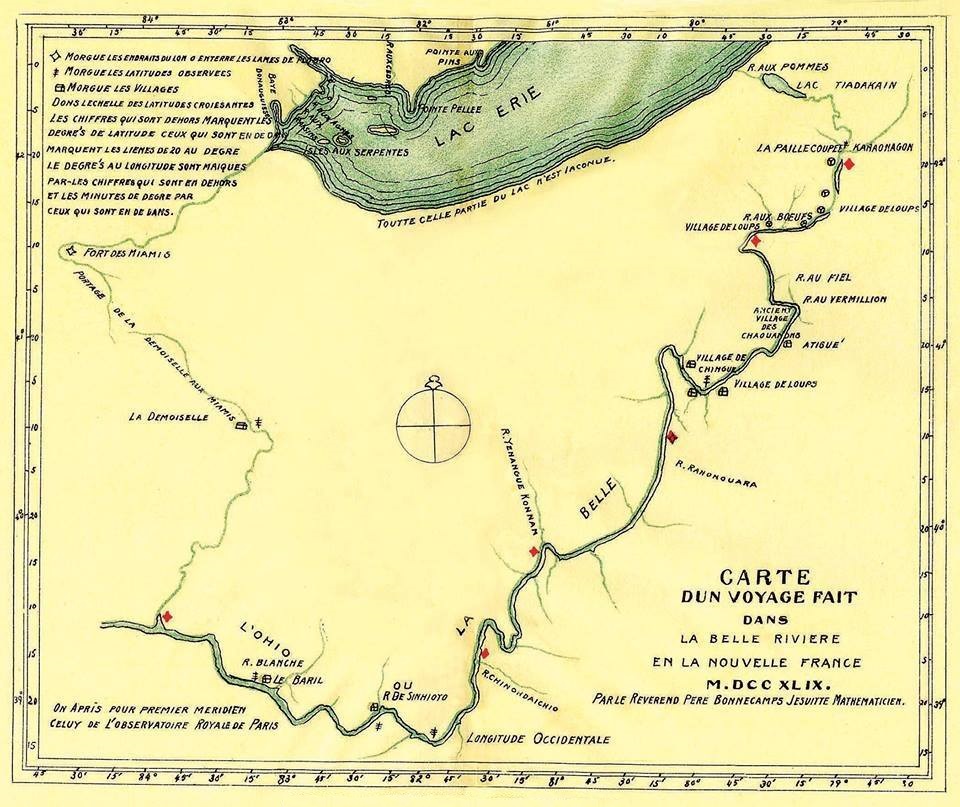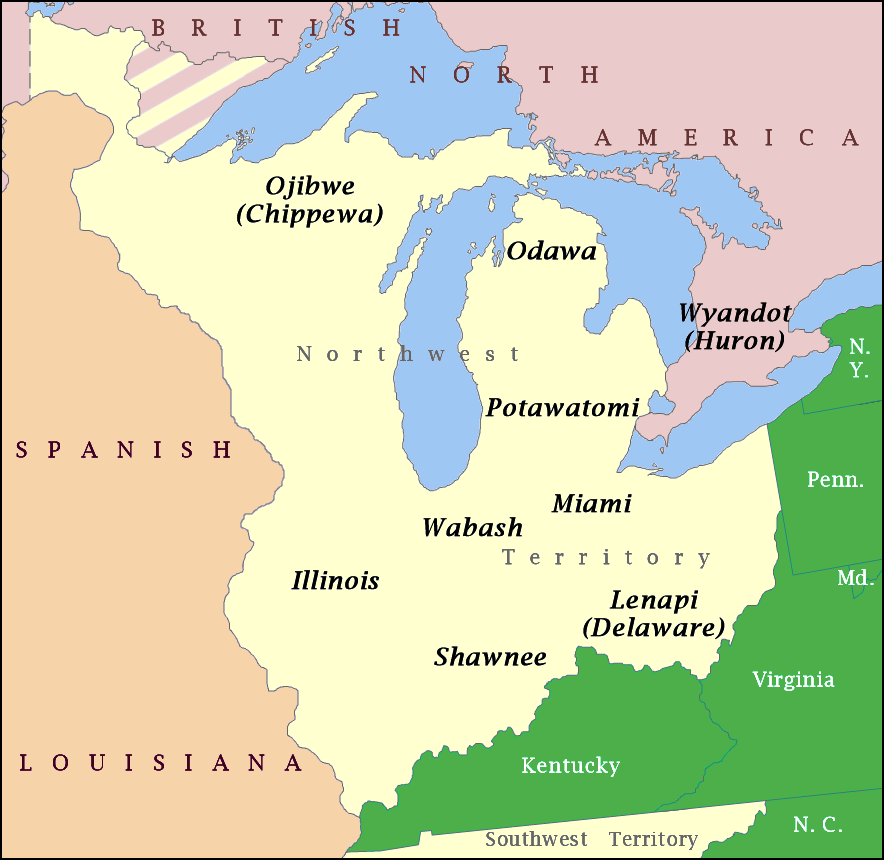|
Piankeshaw
The Piankeshaw, Piankashaw or Pianguichia were members of the Miami tribe who lived apart from the rest of the Miami nation, therefore they were known as Peeyankihšiaki ("splitting off" from the others, Sing.: ''Peeyankihšia'' - "Piankeshaw Person"). When European settlers arrived in the region in the 1600s, the Piankeshaw lived in an area along the south central Wabash River that now includes western Indiana and Illinois. Their territory was to the north of Kickapoo (around Vincennes) and the south of the Wea (centered on Ouiatenon). They were closely allied with the Wea, another group of Miamis. The Piankashaw were living along the Vermilion River in 1743. History The ''first'' ''Peeyankihšionki'' or ''Piankeshaw Village'' ("Place of the Piankashaw") was at the confluence of the Peeyankihšiaki Siipiiwi ("River of the Peeyankihšiaki/Piankashaw, i.e. Vermilion River") and the Waapaahšiki Siipiiwi ("white shining", "pure white" or "River over white stones, i.e. Wabash River ... [...More Info...] [...Related Items...] OR: [Wikipedia] [Google] [Baidu] |
Battle Of The Embarras River
During the onset of the Northwest Indian War (1786–1795), there were numerous skirmishes around Vincennes in 1786 between American settlers and Native Americans near Vincennes, a frontier town on the Wabash River. American pioneers had been pouring into the area after the American Revolutionary War, creating tensions with the Native inhabitants of the region. On April 15, 1786, American militiamen from Vincennes, responding to an attack on a river boat, attacked Natives along the Embarras River; the Americans had three men killed in the skirmish. As hostilities continued, Americans appealed to Virginia Militia officer George Rogers Clark in Kentucky to protect Vincennes from Natives. Meanwhile, Jean Marie Philippe Le Gras, the French civilian commandant at Vincennes, worked to maintain peace between Natives and Americans. He blamed the crisis on indiscriminate American attacks on friendly Natives, and unsuccessfully tried to expel Americans from Vincennes. Background Vince ... [...More Info...] [...Related Items...] OR: [Wikipedia] [Google] [Baidu] |
Miami People
The Miami ( Miami-Illinois: ''Myaamiaki'') are a Native American nation originally speaking one of the Algonquian languages. Among the peoples known as the Great Lakes tribes, they occupied territory that is now identified as North-central Indiana, southwest Michigan, and western Ohio. The Miami were historically made up of several prominent subgroups, including the Piankeshaw, Wea, Pepikokia, Kilatika, Mengakonkia, and Atchakangouen. In modern times, Miami is used more specifically to refer to the Atchakangouen. By 1846, most of the Miami had been forcefully displaced to Indian Territory (initially to what is now Kansas, and later to what is now part of Oklahoma). The Miami Tribe of Oklahoma are the federally recognized tribe of Miami Indians in the United States. The Miami Nation of Indiana, a nonprofit organization of descendants of Miamis who were exempted from removal, have unsuccessfully sought separate recognition. Name The name Miami derives from ''Myaamia'' (plu ... [...More Info...] [...Related Items...] OR: [Wikipedia] [Google] [Baidu] |
Vincennes, Indiana
Vincennes is a city in and the county seat of Knox County, Indiana, United States. It is located on the lower Wabash River in the southwestern part of the state, nearly halfway between Evansville and Terre Haute. Founded in 1732 by French fur traders, notably François-Marie Bissot, Sieur de Vincennes, for whom the Fort was named, Vincennes is the oldest continually inhabited European settlement in Indiana and one of the oldest settlements west of the Appalachians. According to the 2010 census, its population was 18,423, a decrease of 1.5% from 18,701 in 2000. Vincennes is the principal city of the Vincennes, IN Micropolitan Statistical Area, which comprises all of Knox County and had an estimated 2017 population of 38,440. History The vicinity of Vincennes was inhabited for thousands of years by different cultures of indigenous peoples. During the Late Woodland period, some of these peoples used local loess hills as burial sites; some of the more prominent examples a ... [...More Info...] [...Related Items...] OR: [Wikipedia] [Google] [Baidu] |
Pickawillany
"ash people" , settlement_type = Historic Native American village , image_skyline = , imagesize = , image_alt = , image_map1 = OHMap-doton-Piqua.png , mapsize1 = 220px , map_caption1 = Location of Pickawillany Village , image_caption = , nickname = , coordinates = , established_title = Founded , established_date = 1747 , established_title2 = Demolished , established_date2 = 21 June, 1752 , established_title3 = , established_date3 = , population_total = , population_est = 400 families (1200–1600 people) , pop_est_as_of = 1750 , subdivision_type = State , subdivision_name = Ohio , subdivision_type1 = Present-day community , subdivision_name1 = Piqua, Ohio , subdivision_type2 = County , subdivision_name2 = Miami , image_map = Ohio in ... [...More Info...] [...Related Items...] OR: [Wikipedia] [Google] [Baidu] |
Miami-Illinois
Miami-Illinois (endonym: , ) also known as Irenwa, or Irenwe is an indigenous Algonquian language spoken in the United States, primarily in Illinois, Missouri, Indiana, western Ohio and adjacent areas along the Mississippi River by the Miami and Wea as well as the tribes of the Illinois Confederation, including the Kaskaskia, Peoria, Tamaroa, and possibly Mitchigamea. The Myaamia (Miami) Nation of Indiana still practice and use their native heritage to teach young and old so they can keep their traditional language alive. Classification Miami-Illinois is an Algonquian language within the larger Algic family. It is usually described as a Central Algonquian language, but that grouping denotes a geographic rather than genetic affiliation. A thorough genetic classification of Central Algonquian languages has not yet been achieved, and so Miami-Illinois' closest relatives have not been conclusively established. Lexically, Miami-Illinois most closely resembles the Sauk-Fox-Kic ... [...More Info...] [...Related Items...] OR: [Wikipedia] [Google] [Baidu] |
Grand Rapids Hotel
The Grand Rapids Hotel also known as The Grand Rapids Resort, was a hotel that existed outside of Mount Carmel, Illinois, in Wabash County, Illinois, United States in Southern Illinois from 1922 to 1929. The hotel was located on the Wabash River next to the Grand Rapids Dam on land that was originally purchased by Thomas S. Hinde. Before the hotel was built, the property where the hotel was located was a site of a former homestead, and was used by Frederick Hinde Zimmerman for multiple small shops that sold goods to fisherman and tourists. Frederick Hinde Zimmerman was the founder and owner of the hotel, and he completed construction and opened the hotel to the public on August 7, 1922. The hotel had 36 rooms and one large assembly room that served as a dining room, meeting hall, and was used for weddings, exhibitions, anniversaries, and other important occasions. The hotel was one of the first major resorts on the southern portion of the Wabash River and quickly was able to att ... [...More Info...] [...Related Items...] OR: [Wikipedia] [Google] [Baidu] |
Illinois
Illinois ( ) is a state in the Midwestern United States. Its largest metropolitan areas include the Chicago metropolitan area, and the Metro East section, of Greater St. Louis. Other smaller metropolitan areas include, Peoria and Rockford, as well Springfield, its capital. Of the fifty U.S. states, Illinois has the fifth-largest gross domestic product (GDP), the sixth-largest population, and the 25th-largest land area. Illinois has a highly diverse economy, with the global city of Chicago in the northeast, major industrial and agricultural hubs in the north and center, and natural resources such as coal, timber, and petroleum in the south. Owing to its central location and favorable geography, the state is a major transportation hub: the Port of Chicago has access to the Atlantic Ocean through the Great Lakes and Saint Lawrence Seaway and to the Gulf of Mexico from the Mississippi River via the Illinois Waterway. Additionally, the Mississippi, Ohio, and W ... [...More Info...] [...Related Items...] OR: [Wikipedia] [Google] [Baidu] |
Illinois Confederation
The Illinois Confederation, also referred to as the Illiniwek or Illini, were made up of 12 to 13 tribes who lived in the Mississippi River Valley. Eventually member tribes occupied an area reaching from Lake Michicigao (Michigan) to Iowa, Illinois, Missouri, and Arkansas. The five main tribes were the Cahokia, Kaskaskia, Michigamea, Peoria, and Tamaroa. The name of the confederation was derived from the transliteration by French explorers of to ''Illinois'', more in keeping with the sounds of their own language. The tribes are estimated to have had tens of thousands of members, before the advancement of European contact in the 17th century that inhibited their growth and resulted in a marked decline in population. The Illinois, like many Native American groups, sustained themselves through agriculture, hunting, and fishing. A partially nomadic group, the Illinois often lived in longhouses and wigwams, according to the season and resources that were available to them in t ... [...More Info...] [...Related Items...] OR: [Wikipedia] [Google] [Baidu] |
Northwest Indian War
The Northwest Indian War (1786–1795), also known by other names, was an armed conflict for control of the Northwest Territory fought between the United States and a united group of Native American nations known today as the Northwestern Confederacy. The United States Army considers it the first of the American Indian Wars. Following centuries of conflict for control of this region, it was granted to the new United States by the Kingdom of Great Britain in article 2 of the Treaty of Paris, which ended the American Revolutionary War. The treaty used the Great Lakes as a border between British territory and the United States. This granted significant territory to the United States, initially known as the Ohio Country and the Illinois Country, which had previously been prohibited to new settlements. However, numerous Native American peoples inhabited this region, and the British maintained a military presence and continued policies that supported their Native allies. Wi ... [...More Info...] [...Related Items...] OR: [Wikipedia] [Google] [Baidu] |
American Revolution
The American Revolution was an ideological and political revolution that occurred in British America between 1765 and 1791. The Americans in the Thirteen Colonies formed independent states that defeated the British in the American Revolutionary War (1775–1783), gaining independence from the British Crown and establishing the United States of America as the first nation-state founded on Enlightenment principles of liberal democracy. American colonists objected to being taxed by the Parliament of Great Britain, a body in which they had no direct representation. Before the 1760s, Britain's American colonies had enjoyed a high level of autonomy in their internal affairs, which were locally governed by colonial legislatures. During the 1760s, however, the British Parliament passed a number of acts that were intended to bring the American colonies under more direct rule from the British metropole and increasingly intertwine the economies of the colonies with those of Brit ... [...More Info...] [...Related Items...] OR: [Wikipedia] [Google] [Baidu] |
Wabash Confederacy
The Wabash Confederacy, also referred to as the Wabash Indians or the Wabash tribes, was a number of 18th century Native American villagers in the area of the Wabash River in what are now the U.S. states of Illinois, Indiana, and Ohio. The Wabash Indians were primarily the Miami, Weas and Piankashaws, but also included Kickapoos, Mascoutens, and others. In that time and place, Native American tribes were smaller political units, and the villages along the Wabash were multi-tribal settlements with no centralized government. The confederacy, then, was a loose alliance of influential village leaders (sometimes called headmen or chiefs). In the 1780s, headmen of the Wabash Confederacy allied themselves with a larger, loose confederacy of Native American leaders in the Ohio Country and Illinois Country known as the Northwestern Confederacy, in order to collectively resist U.S. expansion after the American Revolutionary War. In 1786, a Wyandot messenger named Scotosh warned Congress ... [...More Info...] [...Related Items...] OR: [Wikipedia] [Google] [Baidu] |
.jpg)


